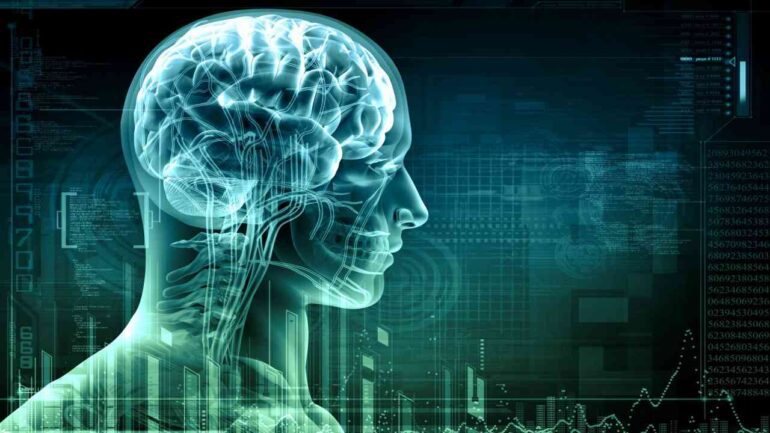TL;DR:
- UT researchers utilize AI to translate brain activity into text.
- GPT, a powerful language model, is key to extracting meaning from brain data.
- Landmark study demonstrates AI’s potential in human-computer interaction.
- AI predicts speech patterns based on brain activity with impressive accuracy.
- Focus on capturing meaning rather than verbatim speech.
- Unique data abundance and GPT’s contextual understanding drive success.
- Ethical and practical considerations mitigate concerns of mind-reading AI.
- Advancements pave the way for improved brain-computer interfaces.
- Medical applications not yet realized, but optimistic about future possibilities.
Main AI News:
In a groundbreaking leap toward seamless human-computer communication, researchers at the University of Texas (UT) have demonstrated the extraordinary potential of artificial intelligence (AI) in translating raw brain data into text. This cutting-edge achievement, led by Alex Huth, an esteemed assistant professor in neuroscience and computer science, promises to reshape our interaction with technology, reducing the dependency on traditional input methods like keyboards. This remarkable advancement was unveiled in a seminal study published this May in Nature Neuroscience.
The core of this transformative breakthrough lies in the innovative application of AI, particularly GPT—a sophisticated large language model developed by OpenAI, renowned for its prowess in natural language understanding and generation. Distinct from conventional chatbots, GPT has evolved into a versatile tool capable of software creation, essay writing, humor, summarizing intricate research, and more.
Huth envisions these applications as mere glimpses into the immense potential of this AI generation. He perceives GPT and its AI counterparts as gateways to unlocking the intricate workings of the human mind, a gateway that could revolutionize digital technology interaction.
At the heart of their brain-to-text system lies GPT, which was trained to predict brain activity based on language. The researchers orchestrated a meticulous process involving fMRI machines to record participants’ brain patterns while they absorbed content from “The Moth,” an unscripted podcast featuring personal anecdotes. Unlike traditional brain-to-speech techniques that focus on limited brain areas, fMRI captures comprehensive brain activity changes. These patterns were then harnessed to develop a machine learning model capable of interpreting brain activity in response to the podcast’s content.
Huth’s team astounded themselves by the accuracy of their AI’s predictions, though not without nuance. Instead of generating verbatim speech, the AI paraphrased the podcast transcripts, emphasizing its grasp on meaning rather than mere words. Huth envisions this technology advancing toward perfect transcripts, but highlights the AI’s achievement in capturing the essence of human thoughts encoded in brain activity.
The AI’s exceptional predictive capability was attributed to abundant data and the unique methodology employed. Around 16 hours of fMRI data per participant facilitated rigorous training of the AI. GPT’s distinct approach to processing data also played a pivotal role. Its ability to contextualize words within sentences empowered it to comprehend meaning holistically, not just as individual words.
While the intricacies of GPT’s success in translating brain activity remain an enigma, the researchers’ focus was on the potentiality, not the explanation. Huth emphasizes the practicality—GPT works, and its integration holds transformative possibilities.
While the prospect of AI reading minds might evoke concerns, Huth reassures that practical implementation remains intricate. The extensive time participants spent in fMRI machines and the individualized nature of AI models safeguard against premature mind-reading dystopias. The AI’s limitations, being person-specific and tied to audio or visual stimulus, emphasize the nascent stage of this research.
Despite limitations, this research paves a vital path toward advanced brain-computer interfaces, particularly for individuals with communication impairments. While medical applications are yet to materialize, Huth and his team remain optimistic. Jerry Tang, a lead author on the paper, envisions their study as a stepping stone towards using AI to restore communication for those who’ve lost their ability to speak or write.
Conclusion:
The breakthrough in AI-powered brain-to-text translation showcased by UT researchers holds substantial implications for the market. This advancement marks a pivotal stride towards more intuitive human-computer interaction. The fusion of AI and neuroscience blurs the boundaries between thought and technology, foreshadowing a future where meaningful communication transcends conventional input methods. While medical applications are on the horizon, the prospect of enhanced brain-computer interfaces can revolutionize sectors focused on accessibility, communication, and assistive technologies. Businesses that align with this trajectory stand to harness the transformative potential of this cutting-edge convergence.

